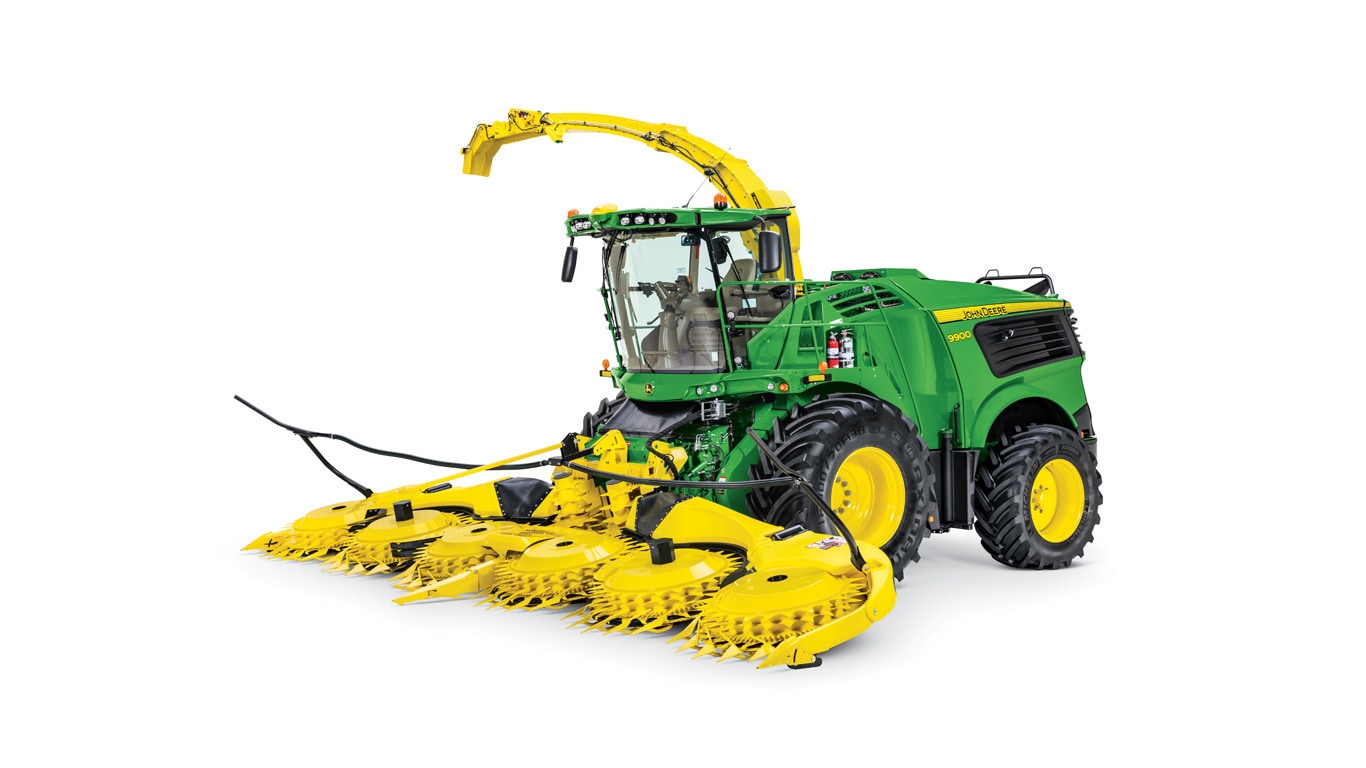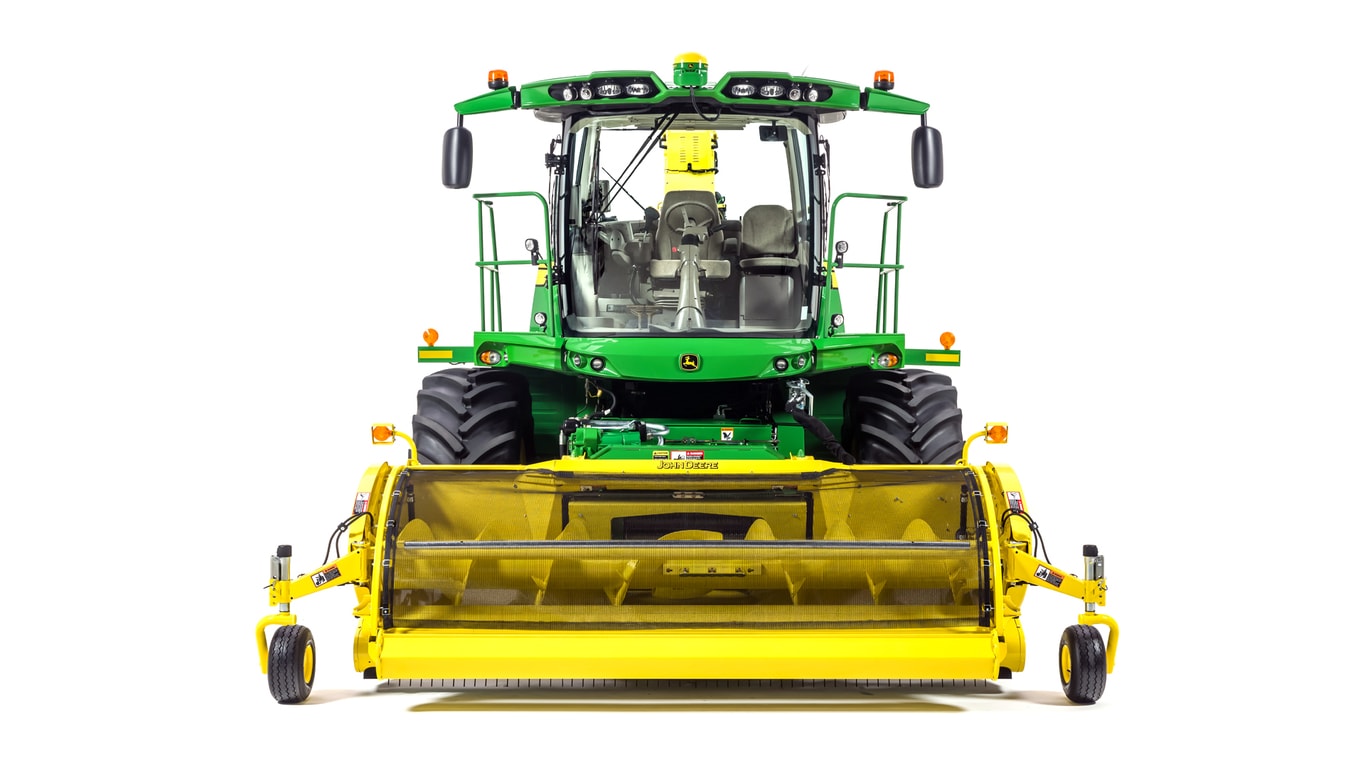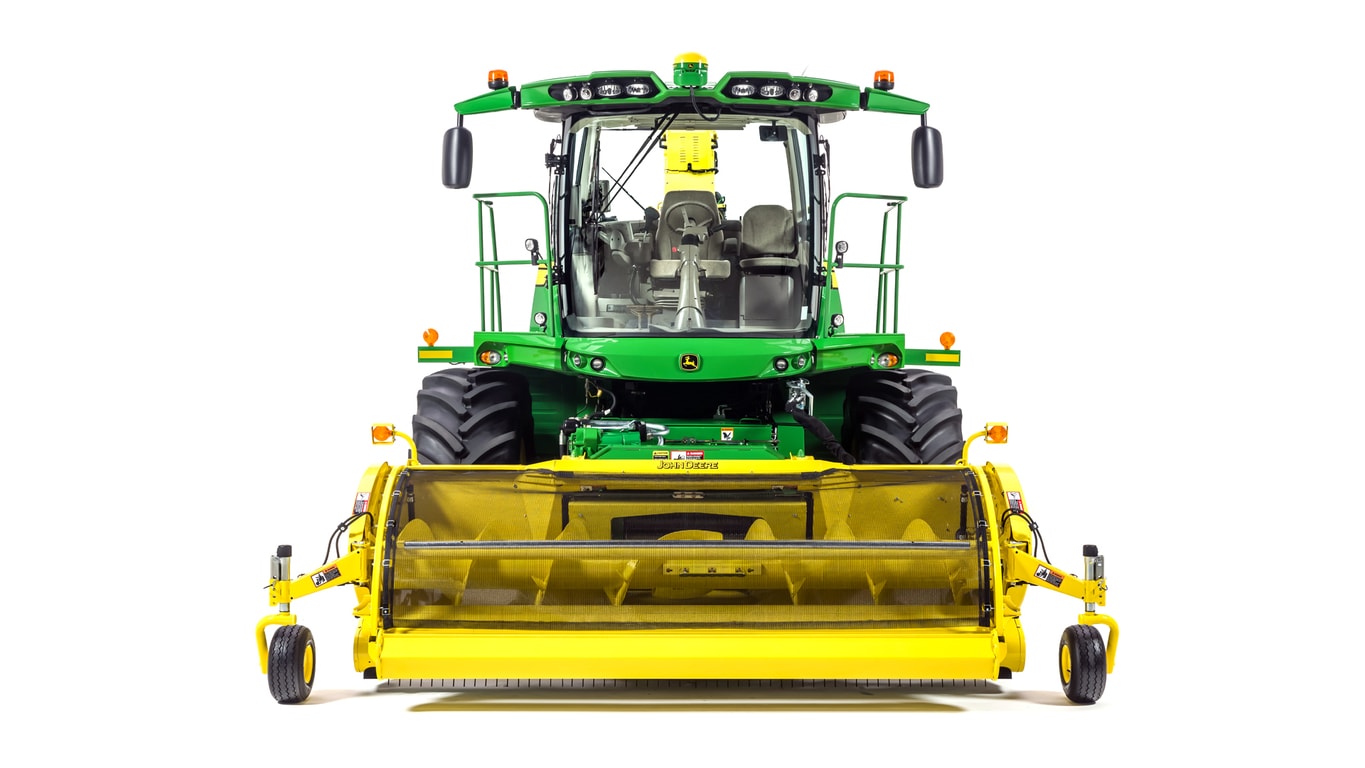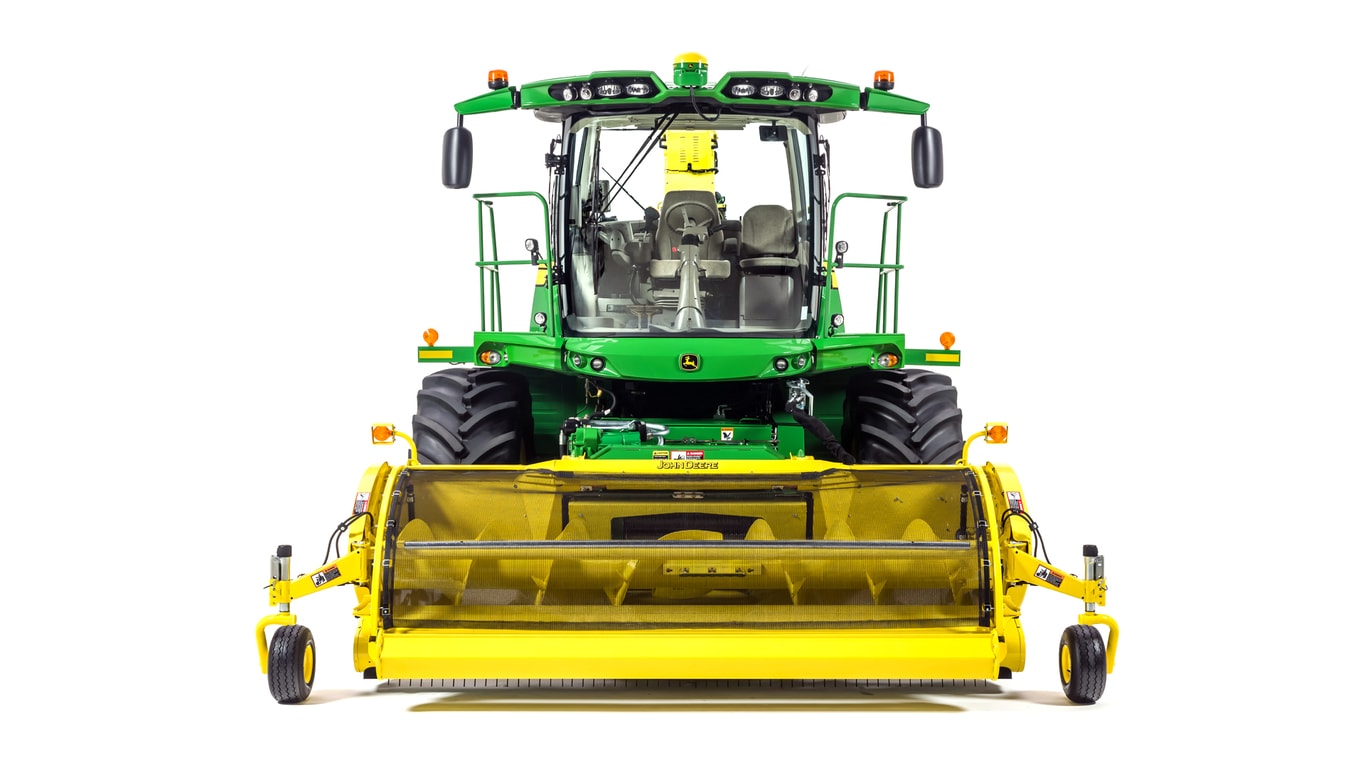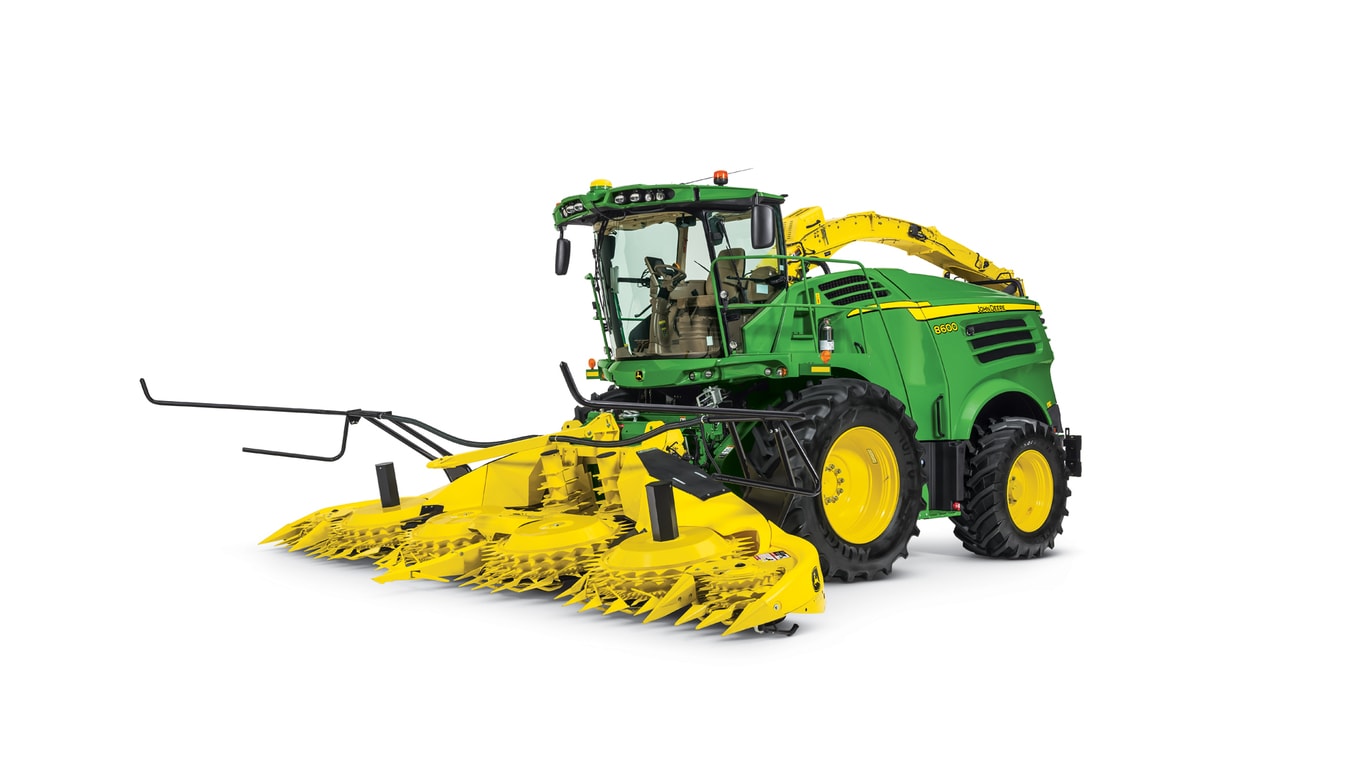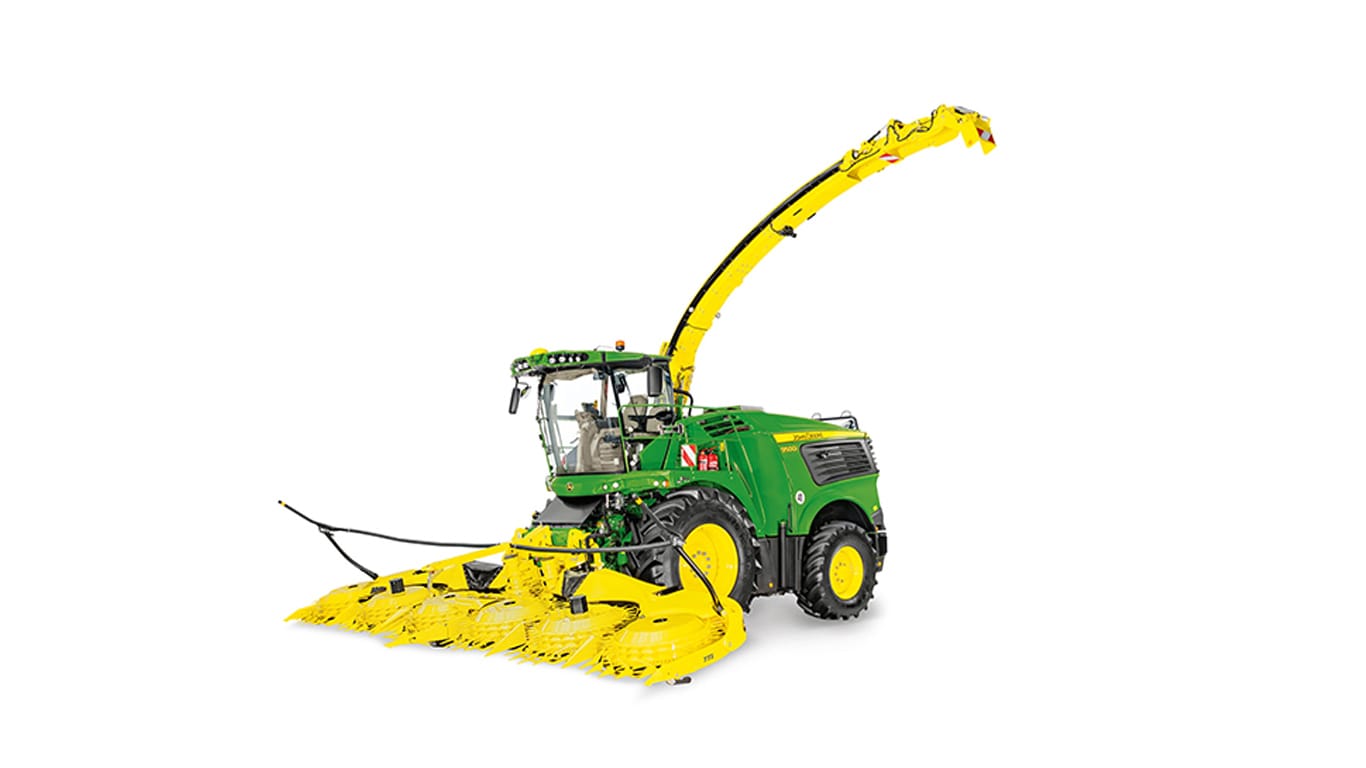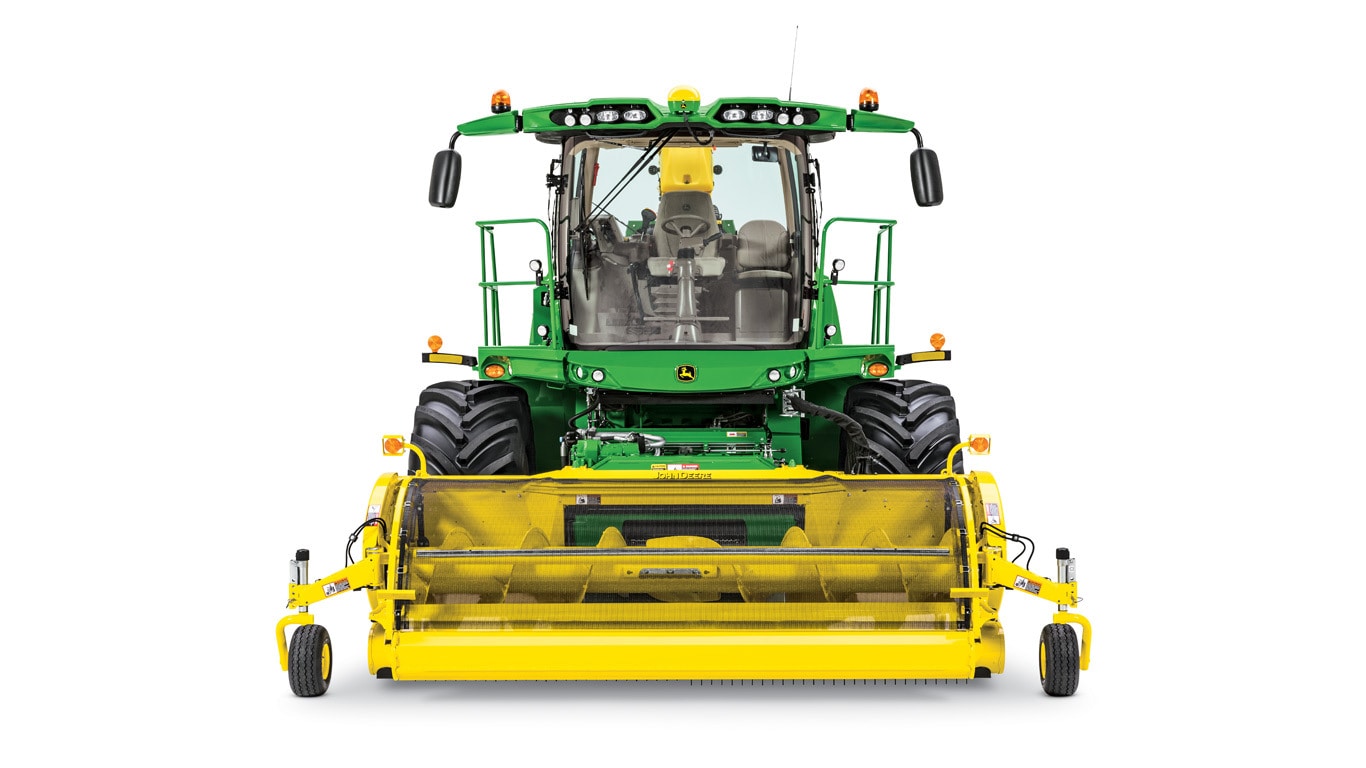 HarvestLab 3000 measures dry matter and constituents on the go
HarvestLab 3000 measures dry matter and constituents on the go
 HarvestLab 3000 sensor mounted on the spout
HarvestLab 3000 sensor mounted on the spout
The HarvestLab 3000 sensor mounts to the top of the discharge spout and takes accurate dry matter and ingredient readings (more than 4000 measurements per second) of the crop through the sapphire glass lens as crop passes through the spout. This is the same technology forage labs use to measure dry matter. HarvestLab 3000 with John Deere Constituent Sensing measures dry matter and constituents like sugar, starch, acid detergent fiber (ADF), neutral detergent fiber (NDF), crude fiber, crude ash, crude protein, crude fat, Metabolic Energy and ELOS depending on the crop. In addition, the HarvestLab 3000 sensor can also be used as a stationary unit.
 Stationary usage of HarvestLab 3000
Stationary usage of HarvestLab 3000
Crop type and constituent sensing
| Crop type |
Moisture/ dry matter |
Crude protein |
Crude starch |
uNDF |
ADF |
Crude sugar |
Crude Ash |
| Corn |
X |
X |
X |
X |
X |
--- |
X |
| Alfalfa |
X |
X |
--- |
X |
X |
X |
X |
| Whole crop silage |
X |
X |
X |
X |
X |
X |
X |
| Grass |
X |
--- |
--- |
--- |
--- |
--- |
--- |
When HarvestLab 3000 is used in conjunction with Harvest Monitor™ system, a wealth of important information becomes available to the operator, including productivity in acres per hour, throughput in tons per hour, total area harvested, total crop mass harvested, yields, and dry matter. To measure and document the constituents, a G5Plus Universal Display is required. All data documented on the G5Plus Universal Display is shown in John Deere Operations Center.
 Constituent data in Operations Center
Constituent data in Operations Center
When the HarvestLab 3000 is used in conjunction with an 8000 or 9000 Series Self-Propelled Forage Harvester (SPFH) and a GreenStar™ display, AutoLoc functionality is automatically present. AutoLoc automatically varies the length of cut according to the desired crop-dry matter correlation settings based on the dry matter readings from the HarvestLab 3000 sensor. With the AutoLoc adjustment, bunk density is improved and a high forage quality is reached.
AutoLoc - Automatic length of cut
 AutoLoc on the SPFH
AutoLoc on the SPFH
- HarvestLab 3000 — moisture and ingredients on the go
- Manual control (operator)
- AutoLoc — automatic control
- IVLOC™ transmission — length of control changes on the go
AutoLoc, a feature exclusive to John Deere and unique to the market, brings added value to the HarvestLab sensor and John Deere SPFH. AutoLoc works in conjunction with the HarvestLab 3000 sensor and IVLOC transmission to automatically adjust the length of cut (LOC) based on crop moisture levels to improve bunk density and reduce long particles in dry corn. Nutritionists, herdsmen, and SPFH operators will all benefit from this innovation.
John Deere is leading the industry in providing real-time information that matters most to forage production. Quality forage comes from properly packed silage, which is directly related to the moisture content and LOC of the crop.
LOC changes are made automatically in the field based on moisture readings and predetermined settings determined by operator requirements. No in-field calibration is required to load the LOC requirements; the operator simply uses the GreenStar™ display to program the desired LOC settings at different moisture levels.
When moisture levels of crop in the field change, the IVLOC drive automatically responds to either increase or decrease the feedroll speed, which in turn changes the LOC. If moisture levels of the crop are outside of the desired range, the IVLOC transmission adjusts and limits the LOC based on the maximum and minimum LOC settings as determined by the operator.
 AutoLoc screen
AutoLoc screen
AutoLoc solves the dry matter and LOC puzzle
According to the accurate moisture readings, AutoLoc is able to adjust the proper LOC automatically in steps as small as 1 mm (0.04 in.). This process is faster and more accurate than any operator could do manually because of all the other important operating functions being performed. This can increase overall efficiency dramatically.
With AutoLoc, the SPFH operator simply sets the minimum, optimum, and maximum moisture levels and the corresponding lengths of cut. AutoLoc then creates a linear curve between the minimum and the optimum and between the optimum and the maximum. LOCs are then determined based on those lines.
For example, if the optimum LOC were set to 15 mm (0.59 in.) at 68 percent moisture and 8 mm (0.31 in.) at 50 percent moisture, and the actual moisture of the crop was 63 percent, AutoLoc would change the LOC to be 13 mm (0.51 in.) based on the linear curve it created.
 AutoLoc chart
AutoLoc chart
Forage harvester performance and AutoLoc
The following equipment is required for AutoLoc functionality:
- GreenStar display with Gen 4 4640 Universal Display
- HarvestLab 3000 sensor
- 8000 or 9000 Series SPFH
Why AutoLoc is a must to ensure silage quality and overall profitability
It impacts the silage compaction in the bunker to ensure the quality of feed being stored is the best quality possible.
Silage density and AutoLoc
Good silage starts with high bunk density to preserve the crop value. This is the main objective for both dairy/beef producers and biogas plants. Many factors are involved in achieving high bunk density, including type of crop, moisture levels, length of cut, bunk filling speed, and compaction machinery.
Some of these factors cannot be easily changed while harvesting. AutoLoc adds an improved sense of control to the harvesting and silage storage operation. Operators do not need to compromise when choosing the proper length of cut based on moisture. AutoLoc takes care of this chore automatically.
Oftentimes, producers are so focused on getting the job done that important tasks and details are overlooked during the harvesting operation. Knowing the growing period for corn silage covers five months growing in the field and only a few days harvesting for 10 to 12 months of feeding, the process of the silage harvest and storage should be managed as well as possible.
The impact of the silage quality, which can be harvested and stored in just a few days, can have a huge impact on income throughout the entire year. The silage cost is a major part of the expenses in the dairy/beef and biogas plant businesses. Poor forage quality can cost tens of thousands of dollars per year in increased feed costs resulting in the producer having to invest in additional silage to reach the desired feed ration.
Spoilage/reheating and seeping losses are the biggest problems in silage bunks. These problems often happen due to insufficient compaction and an incorrect LOC. To achieve the right amount of silage compaction and keep as much air out of the silage as possible, the LOC has to be adjusted according to the moisture levels of the crop - the wetter the material, the bigger the particle size.
While varying lengths of cut can dramatically help to achieve high density levels, the length of cut of the material must be consistent in order to maintain normal rumination, chewing, and saliva production in the rumen. If the particles are too small, the food does not fit anymore with the process of the cow rumen and the compaction becomes difficult due to the instability of the material.
For this reason, John Deere created AutoLoc, which automatically adjusts the length of cut to the moisture value, while staying within the preset LOC range.
Having some limited LOC variations in a bunk silo should not affect the effective fiber in the ration on a daily basis. Using AutoLoc in conjunction with upright or bag silos can vary the effective fiber fed to animals on a daily basis.
Looking at the studies done by Honig and Rohr in 1985, as can be seen in the following table, it is possible to get high-density levels of dryer crop when the crop is chopped at a shorter LOC.
Length of cut |
Bunk density |
73 percent moisture |
64 percent moisture |
4 mm (0.16 in.) |
205 kg/m3 (12.8 lb/cu ft) |
179.7 kg/m3 (11.2 lb/cu ft) |
7 mm (0.28 in.) |
192.2 kg/m3 (12.0 lb/cu ft) |
174.6 kg/m3 (10.9 lb/cu ft) |
14 mm (0.55 in.) |
173 kg/m3 (10.8 lb/cu ft) |
157 kg/m3 (9.8 lb/cu ft) |
